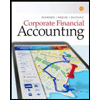
Concept explainers
(1) and (2)
Journalize the transactions and post to the eight selected accounts.
(1) and (2)
Explanation of Solution
Common stock: These are the ordinary shares that a corporation issues to the investors in order to raise funds. In return, the investors receive a share of profit from the profits earned by the corporation in the form of dividend.
Par value: It refers to the value of a stock that is stated by the corporation’s charter. It is also known as face value of a stock.
Stated value: It refers to an amount per share, which is assigned by the board of directors to no par value stock.
Issue of common stock for non-cash assets or services: Corporations often issue common stock for the services received from attorneys or consultants as compensation, or for the purchase of non-cash assets such as land, buildings, or equipment.
Record the transactions for Incorporation ME.
| Date | Account Titles and Explanation | Debit ($) | Credit ($) | |
| 20Y | ||||
| January | 22 | Cash Dividends Payable | 28,000 | |
| Cash | 28,000 | |||
| (To record the payment of cash dividends) | ||||
| April | 10 | Cash | 1,800,000 | |
| Common Stock | 1,500,000 | |||
|
Paid-in Capital in Excess of stated value Common Stock | 300,000 | |||
| (To record issuance of 75,000 shares in excess of stated value) | ||||
| June | 6 | Cash | 650,000 | |
|
Treasury stock | 450,000 | |||
|
Paid-in capital from treasury stock | 200,000 | |||
| (To record sale of treasury stock for above the cost price of $18 per share) | ||||
| July | 5 | Stock Dividends (4) | 450,000 | |
|
Common Stock Dividends Distributable (5) | 360,000 | |||
|
Paid-in Capital in excess of Stated Value-Common stock (6) | 90,000 | |||
| (To record the declaration of stock dividends) | ||||
| August | 15 | Common Stock Dividends Distributable (5) | 360,000 | |
| Common Stock | 360,000 | |||
| (To record the distribution of stock dividends) | ||||
| November | 23 | Treasury stock | 570,000 | |
| Cash | 570,000 | |||
| (To record the purchase of 30,000 shares of treasury stock) | ||||
| December | 28 | Cash Dividends (8) | 43,800 | |
| Cash Dividends Payable | 43,800 | |||
| (To record the declaration of cash dividends) | ||||
| December | 31 | Retained Earnings | 493,800 | |
| Stock dividends (4) | 450,000 | |||
| Cash Dividends (8) | 43,800 | |||
| (To record the closing of stock dividends and cash dividends to retained earnings account) | ||||
Table (1)
Working note:
(1)
Calculate treasury stock cost per share.
(2)
Compute number of shares outstanding after the sale of treasury stock on June 6.
(3)
Compute the stock dividends shares.
(4)
Compute the stock dividends amount payable to common stockholders.
(5)
Compute common stock dividends distributable value.
(6)
Compute paid-in capital in excess of par value-common stock.
(7)
Compute number of shares outstanding as on December 28.
(8)
Calculate the amount of cash dividend declared on December 28.
Post the above journal entries into the stockholders’ equity accounts for Incorporation ME.
Common stock account is a component of stockholder’s equity with a normal credit balance.
| Common stock | |||||
| Date | Particulars | Debit | Date | Particulars | Credit |
| January 1 | Balance | $7,500,000 | |||
| April 10 | Cash | $1,500,000 | |||
| August 15 | Stock dividends distributable | $360,000 | |||
| Total | $ 0 | Total | $ 9,360,000 | ||
| December 31 | Balance | $9,360, 000 | |||
Table (2)
Paid-in capital in excess of stated value - Common stock account is a component of stockholder’s equity with a normal credit balance.
| Paid-in capital in excess of stated value - Common stock | |||||
| Date | Particulars | Debit | Date | Particulars | Credit |
| January 1 | Balance | $825,000 | |||
| April 10 | Cash | $300,000 | |||
| July 5 | Stock dividends | $90,000 | |||
| Total | $ 0 | Total | $ 1,215,000 | ||
| December 31 | Balance | $ 1,215,000 | |||
Table (3)
Retained earnings are a component of stockholder’s equity with a normal credit balance.
| Retained earnings | |||||
| Date | Particulars | Debit | Date | Particulars | Credit |
| December 31 | Cash and stock dividends | $493,800 | January 1 | Balance | $33,600,000 |
| December 31 | Net income | $1,125,000 | |||
| Total | $493,800 | Total | $34,725,000 | ||
| December 31 | Balance | $ 34,231,200 | |||
Table (4)
Treasury stock is a component of stockholder’s equity with a normal debit balance.
| Treasury stock | |||||
| Date | Particulars | Debit | Date | Particulars | Credit |
| January 1 | Balance | $450,000 | June 6 | Cash | $450,000 |
| November 23 | Cash | $570,000 | |||
| Total | $ 1,020,000 | Total | $450,000 | ||
| December 31 | Balance | $ 450,000 | |||
Table (5)
Paid-in capital from treasury stock is a component of stockholder’s equity with a normal credit balance.
| Paid-in capital from treasury stock | |||||
| Date | Particulars | Debit | Date | Particulars | Credit |
| June 6 | Cash | $200,000 | |||
| Total | $ 0 | Total | $200,000 | ||
| December 31 | Balance | $200,000 | |||
Table (6)
Stock dividend distributable is a contra stockholder’s equity with a normal credit balance.
| Stock dividend distributable | |||||
| Date | Particulars | Debit | Date | Particulars | Credit |
| August 15 | Common stock | $360,000 | June 5 | Stock dividend | $360,000 |
| Total | $360,000 | Total | $360,000 | ||
| December 31 | Balance | $0 | |||
Table (7)
Stock dividend is a component of stockholder’s equity with a normal debit balance.
| Stock dividend | |||||
| Date | Particulars | Debit | Date | Particulars | Credit |
| July 5 | Stock dividend distributable | $360,000 | December 31 | Retained earnings | $450,000 |
| July 5 | Paid in capital in excess of stated value –Common value | $90,000 | |||
| Total | $450,000 | Total | $450,000 | ||
| December 31 | Balance | $0 | |||
Table (8)
Cash dividend is a component of stockholder’s equity with a normal debit balance.
| Stock dividend | |||||
| Date | Particulars | Debit | Date | Particulars | Credit |
| December 28 | Cash dividend payable | $43,800 | December 31 | Retained earnings | $43,800 |
| Total | $43,800 | Total | $43,800 | ||
| December 31 | Balance | $0 | |||
Table (9)
(3)
Prepare a
(3)
Explanation of Solution
Retained earnings statement: This is a financial statement that shows the amount of the net income retained by a company at a particular point of time for reinvestment and pays its debts and obligations. It shows the amount of retained earnings that is not paid as dividends to the shareholders.
Prepare a retained earnings statement for the year ended December 31, 20Y6.
| Incorporation ME | |||
| Retained Earnings Statement | |||
| For the Year Ended December 31, 20Y6 | |||
| Retained earnings, January 1, 20Y6 | $33,600,000 | ||
| Net income for year | $1,125,000 | ||
| Less: Dividends: | |||
| Cash | -$43,800 | ||
| Stock | -$450,000 | -$493,800 | |
| Change in retained earnings | $631,200 | ||
| Retained earnings, December 31, 20Y6 | $34,231,200 | ||
Table (10)
(4)
Prepare the
(4)
Explanation of Solution
Stockholders’ equity: It refers to the amount of capital that includes the amount of investment by the stockholders, earnings generated from the normal business operations, and less any dividends paid to the stockholders.
Prepare the stockholders’ equity section of the December 31, 20Y6, balance sheet.
| Incorporation ME | |||
| Partial Balance Sheet | |||
| December 31, 20Y8 | |||
| Stockholders' Equity | Amount | Amount | Amount |
| Paid-in capital: | |||
| Common stock, $20 stated (500,000 shares authorized; 500,000 shares issued, 468,600 shares outstanding) | $9,360,000 | ||
| Excess over stated value | $1,215,000 | ||
| Paid-in capital, common stock | $10,575,000 | ||
| From sale of treasury stock | $200,000 | ||
| Total paid-in capital | $10,775,000 | ||
| Retained earnings | $34,231,200 | ||
| Total | $45,006,200 | ||
| Treasury common stock (30,000 shares at cost) | -$570,000 | ||
| Total stockholders' equity | $44,436,200 | ||
Table (11)
Want to see more full solutions like this?
Chapter 13 Solutions
Cengagenowv2, 1 Term Printed Access Card For Warren/reeve/duchac's Financial Accounting, 15th
- Metlock Lawn Service Company reported a net loss of $15300 for the year ended December 31, 2025. During the year, accounts receivable decreased $25000, inventory increased $20000, accounts payable increased by $30600, and depreciation expense of $26400 was recorded. During 2025, operating activities provided net cash of $77000 O provided net cash of $46700. O used net cash of $46700. ○ used net cash of $9200.arrow_forwardPlease help me solve this financial accounting question using the right financial principles.arrow_forwardDon't use aiarrow_forward
- General accounting Problemarrow_forwardA company purchased for cash a machine with a list price of $85,000. The machine was shipped FOB shipping point at a cost of $6,500. Installation and test runs of the machine cost $4,500. The recorded acquisition cost of the machine is which amount? Need helparrow_forwardJersey Manufacturing applies manufacturing overhead to its cost objects based on 80% of direct material cost. If Job 22B had $64,000 of manufacturing overhead applied to it during June, what was the amount for direct materials assigned to Job 22B? Answerarrow_forward
- Net income is $145,000, accounts payable increased $12,000 during the year, inventory decreased $8,000, and accounts receivable increased $15,000 during the year. Under the indirect method, what is net cash provided by operations?arrow_forwardHelparrow_forwardThe following data is available for Ivanhoe Corporation at December 31, 2025: Common stock, par $10 (authorized 32500 shares) $292500 Treasury stock (at cost $15 per share) $1110 Based on the data, how many shares of common stock are outstanding? 32500 32426 29250 ○ 29176arrow_forward
- ???arrow_forwardCullumber Corporation issues 44000 shares of $50 par value preferred stock for cash at $65 per share. In the stockholders' equity section, the effects of this transaction increases O paid-in-capital and retained earnings. O preferred stock and retained earnings. preferred stock and additional paid-in capital. common stock and additional paid-in capital.arrow_forwardNeed answerarrow_forward
 Financial AccountingAccountingISBN:9781337272124Author:Carl Warren, James M. Reeve, Jonathan DuchacPublisher:Cengage Learning
Financial AccountingAccountingISBN:9781337272124Author:Carl Warren, James M. Reeve, Jonathan DuchacPublisher:Cengage Learning Managerial Accounting: The Cornerstone of Busines...AccountingISBN:9781337115773Author:Maryanne M. Mowen, Don R. Hansen, Dan L. HeitgerPublisher:Cengage Learning
Managerial Accounting: The Cornerstone of Busines...AccountingISBN:9781337115773Author:Maryanne M. Mowen, Don R. Hansen, Dan L. HeitgerPublisher:Cengage Learning Financial And Managerial AccountingAccountingISBN:9781337902663Author:WARREN, Carl S.Publisher:Cengage Learning,
Financial And Managerial AccountingAccountingISBN:9781337902663Author:WARREN, Carl S.Publisher:Cengage Learning, Financial AccountingAccountingISBN:9781305088436Author:Carl Warren, Jim Reeve, Jonathan DuchacPublisher:Cengage Learning
Financial AccountingAccountingISBN:9781305088436Author:Carl Warren, Jim Reeve, Jonathan DuchacPublisher:Cengage Learning Survey of Accounting (Accounting I)AccountingISBN:9781305961883Author:Carl WarrenPublisher:Cengage Learning
Survey of Accounting (Accounting I)AccountingISBN:9781305961883Author:Carl WarrenPublisher:Cengage Learning Corporate Financial AccountingAccountingISBN:9781305653535Author:Carl Warren, James M. Reeve, Jonathan DuchacPublisher:Cengage Learning
Corporate Financial AccountingAccountingISBN:9781305653535Author:Carl Warren, James M. Reeve, Jonathan DuchacPublisher:Cengage Learning





